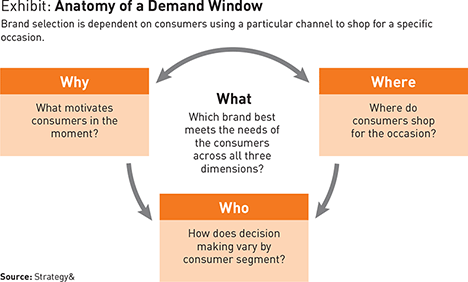By Seb Joseph.
Rather than bundle social video into sponsorship deals, Premier League clubs want to carve out its commercial value to convince sponsors to pay more for that engagement.
The modern-day newsfeed is as stuffed with posts from wannabe stars and celebrity spats as it is with videos from training grounds and changing rooms. Yet many of those creating this content aren’t sure of its commercial worth as it becomes increasingly hard to ignore how much more exposure football teams can get on social media compared to TV.
But because it’s tricky to track the value a brand gets on social, it’s arguably been massively undervalued. No commercial chief can point to half a million Facebook views and say ‘that’s just helped secure my new partnership deal’ when measurement is so blunt. On the other hand, many would ask ‘what’s the cost of not doing it?’
Hundreds of millions in the case of Real Madrid’s Cristiano Ronaldo, whose social media accounts generated an eye-bulging $500m in value for Nike last year according to sponsorship analytics company Hookit.
While Ronaldo isn’t a club, he is a media owner like the Real Madrid team he plays for and, just like his employers, the Portuguese forward knows that content and platforms he owns are in high demand. The world’s most prolific athlete on social media had one post last year that was worth $5.8m after it racked up 1.7m ‘likes’ and nearly 13,000 comments due its timing with Portugal’s Euro 2016 victory.

Ronaldo’s post was worth $5.8m after racking up 1.7m ‘likes’
Valuations like these are frequent as they are rooted in the old media equivalency rules of sponsorship. Hookit’s methodology uses average number of impressions per interaction to come up with a monetary value when really sponsors want a clearer way to compare social media posts with TV inventory. What the likes of Hookit do prove, however, is just how much teams could be missing in the media valuations they currently conduct – especially as brands demand sharper measurement from all parts of the marketing mix.
“Some clubs are not doing it [measuring social video] right and those who aren’t need to change the way they are approaching brands,” says Jean-Pierre Diernaz, vice-president of marketing at Nissan Europe. The car maker, which sponsors Manchester City and the Uefa Champions League among others, sees a potential in a fast spinning sports industry and yet is perturbed by what it deems is an unwillingness to fix what has become a largely inefficient market.
The social video sports revolution
Pound-busting TV deals pushed the 20 top-flight English teams to post record revenues of £3.6bn between 2015 and 2016 and yet they still struggled to make a profit. Collectively, Premier League clubs made a pre-tax loss of £110m, according to Deloitte, stressing the need for additional revenue streams at a time when many commercial bosses are yet to properly monetise their online fanbases.
“Every club has a certain number of fans but what is important is those who are actively engaging with the club,” continues Diernaz. ”The clubs need to be actively showing on the platforms that here is the value. If you look at the top 20 YouTubers in the world they are getting a lot of business with what they are doing so why would you not be operating the same as a football club. It’s clearly a strategy that would accelerate this for clubs.”
Several Premier League clubs are wise to the opportunity, resolving to give brands what they want in the hope of extracting more money from sponsorships. When City Football Group’s (CFG) commercial boss Tom Glick says he can see a time when social video could help his team renegotiate deals, he’s actually talking about a point when he and his team understand the market value of every post and the revenues they generate.
Numbers like that could come in handy if City were to try to convince Nike to top the £60m a season, 15-year deal with Chelsea when it comes to renegotiations. A club like Manchester City could potentially command tens of millions in media value on TV coverage alone. Add social into a mix and that could significantly inflate the media value of said sponsorship deal. Placements that were once thought useless on TV such as those at the club’s training ground could be worth more to a sponsor looking to reach the growing number of younger fans who aren’t only concerned with what their club does on match days.

Training ground placements could prove valuable to City, with fans concerned with the club beyond match day
“Often what’s holding social video back is it is generally wrapped into a larger sponsorship deal which can undervalue what that media represents because its not pulled out or compared with other formats – like display advertising – that might be getting sold… to me social video is more valuable than a display ad on a club’s website and yet in many cases these things are not necessarily being valued in the same way,” suggests Gareth Capon, the chief executive at social video production business Grabyo.
“If you’re a training ground sponsor then you don’t get much TV presence on game day, it’s more the main kit and headline sponsors,” he continues. “But now with social video you suddenly have all these assets where fans who want to know what’s happening with their club each day get to see your brand and those posts are shared all around the world. That’s a real change and the value for that media is not well understood… but once it starts to get compared with traditional TV advertising or and other forms of advertising, or at least it’s valued as a component of an overall sponsors package, then I think its value will rocket.”
Being able to quantify the value of social media
Southampton, like City, have made strides in recent years to move away from being so reliant on broadcast, focusing on depth of engagement rather than mass exposure. WPP-owned sports marketing agency Two Circles is helping it make the transition, which is very much a work in progress. “It’s about how best to value the video so we’re not only doing it in a traditional sense,” says James Kennedy, Southampton FC’s head of marketing. “We’re going down much more of an impression-based route as oppose to a sales route.”
This means partnerships aren’t typically signed off with an agreed number of tweets and database blasts to feign brand activation. Rather, Southampton are focused less on selling price and impressions and much more on delivering engagement and value.
“The ‘impression-based route’ is about understanding a brand’s target audience and helping them reach this group (in a targeted, cost efficient way) across the club’s entire digital network – web, email and social,” adds Kennedy. “So while achieving mass brand exposure and positive affinity is one objective, Saints can help brands develop campaigns to achieve specific objectives because they can segment their entire digital fanbase.”
Methods like this are heavily reliant on equivalent media value measurement. In the case of Southampton, the club argues that it doesn’t apply an “equivalent” media value in the traditional sense. However, because they – along with Two Circles – eschew inflated media values, they have a more consistent benchmark for a marketer to compare the impact of a campaign with buying the media space elsewhere.

Southampton FC’s marketers have become smarter as to how they use their owned media to generate commercial value
Simply put, what Southampton et al are using involves reach and frequency measures of signage to determine the value of sponsors exposure. These are calculated in differing ways and to varying degrees of sophistication but every measure – or impression – is ascribed an equivalent media value that a marketer can compare with paid for advertising. Hence, the underlying assumption for any brand tracking social video this way is it keeps their sponsorship rooted in the value of logo exposure as well as brand equity.
“The way content is valued is media equivalency so if Chevrolet wanted to buy ad space from TV for millions of people then how much would that cost versus being on the front of the Manchester United jersey… it’s exactly the same premise for how we [Nielsen Sports] value digital and social content,” says Max Barnett, global head of digital at Nielsen Sports. The measurement firm is readying a product it claims brings social media and traditional media valuation together for the first time, meaning for every minute of brand exposure data collected, an average of 5,000 data points are input to algorithms to calculate qualitative and valuation based outputs. While similar tools exist, Barnett hopes Nielsen’s own alternative becomes a unified measurement of sponsorship across all media channels.
“We’re seeing more clients’ commercial teams target 15% to 20% share of media value through digital and social” he continues. “If you have declining TV audiences then that’s a really important gap to fill. The audiences are more than likely not leaving, but consuming the content in a different way. Likewise, you could see brands selecting properties with a more significant social footprint to align to their wider marketing channel objective. Could we also see brands go after digital and social assets in the not too distant future? That depends on how rights holders want to package and promote.”
Is it time for football clubs to think like media owners
Some Premier League bosses hope to do this using social metrics such as earned impressions, shares and followers. The Drum understands a number of commercial bosses have at least considered the possibility of adopting a cost per engagement as a new standard in ROI measurement. While these talks are yet to materialise into anything beyond speculation, that they are even happening is vindication enough of social video’s potential value.
Putting a price on social video has been a thorny subject for some time and it was a challenge we have been seeking to shine more light on with our research report series,” says Michael Litman, founder and chief executive at Burst Insights. For example, the social analytics firm found that of the top 20 best performing videos across each social video platform from last season only Manchester United and Chelsea saw exposure value within the set reach over 31m. Arsenal ranked third, Liverpool FC fourth, Manchester City were in fifth place and Tottenham Hotspur rounded out the top six.
“This shows that for example Arsenal are overachieving on social video performance versus actual player performance on the pitch,” adds Litman. “Spurs fans on the flip-side I think will prefer to be nearer the top of the table in real life. I think we will see in time real world performance, correlating more closely with digital performance as the clubs become more akin to global media broadcasters in their own rights.”
Sports sponsorship has become a new game stuck with old rules. No longer is it enough for rights holders to give sponsors the most media for their money. Instead, sponsors want to know how the rights they’re buying add value to their brands, a shift that’s forcing the likes of Manchester City and Southampton FC to behave more like media owners.
The global success of the top six [Premier League] clubs generates a constant demand for sponsorship assets,” says Tom McDonnell, chief executive at digital fan interaction specialists Monterosa. “Brands are looking for end-to-end solutions that entertain and engage. It’s not enough to count a ‘view’, which could be fleeting, but to also consider interaction and active conversation. If a club provides better assets via social video with proven engagement and interaction, it differentiates the club’s offering and that hits the bottom line.”





